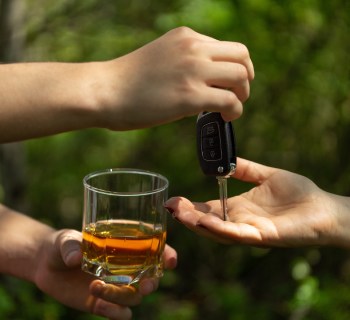Concerned Community Member
Without you, there is no us
We count on concerned citizens like you to help us put an end to impaired driving and underage drinking.
Here are ways you can help put an end to these 100% preventable crimes.

How to prevent someone from driving impaired
If you are faced with a situation where someone who's impaired is trying to drive, here are some tips on how to stop them and keep everyone safe.
The best way to prevent someone from driving impaired is to plan ahead — make sure you have a sober designated driver, and everyone agrees to it ahead of time.
But, sometimes even the best laid plans don’t turn out as expected. If you are faced with a situation where someone who’s impaired is trying to drive, here are some tips on how to stop them and keep everyone safe:
- Be as non-confrontational as possible.
- Suggest alternate ways of getting to their destination—a cab, rideshare, a sober driver, or public transportation.
- Remember that the person you are talking to is impaired—talk a bit more slowly and explain things more fully than if you were speaking to a sober person.
- Explain that you don’t want them to drive because you care and you don’t want them to hurt themselves or others.
- Suggest that they sleep over.
- Enlist a friend to help you or to act as moral support—it’s more difficult to say “no” to two (or three or four) people than one.
- If possible, ask friends who plan to drink to give up their keys before they start drinking.
- If all else fails, call law enforcement. It’s better to have a friend arrested than injured or killed.

Driving impaired with a child in the vehicle is child abuse
No child should be in danger from drunk or drugged driving, especially by someone entrusted to keep them safe—like a parent or caregiver. Minor children often have no choice when it comes to riding with an impaired driver.
Over half of all children killed in drunk driving crashes are killed while riding with the drunk driver. We believe that drunk driving is not only irresponsible but criminal. And having a child in the car elevates this criminal act to child abuse.
But, sometimes even the best laid plans don’t turn out as expected. If you are faced with a situation where someone who’s impaired is trying to drive, here are some tips on how to stop them and keep everyone safe:
2018 CHILD ENDANGERMENT REPORT
A leading cause of traffic death for America’s children: being trapped in a car with an impaired driver. Divorced parents face legal challenges, including subjecting themselves to civil contempt actions if they refuse visitation privileges to protect their children from an impaired caregiver. Many victims do not have the financial resources to seek relief in the civil court system.
What can you do to help?
To start, you can call our toll-free, 24/7 Victim Help Line at 877-MADD-HELP (1-877-623-3435).
Driving under the influence with a child in the vehicle constitutes child abuse. That’s why MADD believes additional sanctions should be placed on those who drive under the influence of alcohol or drugs with a child in the vehicle—regular sanctions and treatment are not enough.
48 states and the District of Columbia have laws enhancing penalties for those who drive drunk with a child passenger in a vehicle. The laws vary widely in severity and definition of a child passenger. For example in New York it is a felony to drive drunk with a child passenger under the age of 16, whereas in Wisconsin, the same offense is a misdemeanor.

How to spot a drunk or drugged driver
Here are a few signs that a fellow motorist may be driving while impaired:
- Quick acceleration or deceleration
- Tailgating
- Weaving or zig-zagging across the road
- Driving anywhere other than on a road designated for vehicles
- Almost striking an object, curb, or vehicle
- Stopping without cause or erratic braking
- Drifting in and out of traffic lanes
- Signaling that is inconsistent with driving actions
- Slow response to traffic signals (e.g. sudden stop or delayed start)
- Straddling the center lane marker
- Driving with headlights off at night
- Swerving
- Driving slower than 10 mph below the speed limit
- Turning abruptly or illegally
- Driving into opposing traffic on the wrong side of the road
MADD does not suggest that you ever take the law into your own hands or put yourself in danger. Read what to do if you’re on the road with an impaired driver.
What you can do if you see an impaired driver
Once you know how to spot an impaired driver, what can you do to ensure this driver gets off the road as quickly as possible, without endangering yourself or others? You can start by following these three steps.
Step one:
Stay as far away from the other vehicle as possible. Don’t try to pass the vehicle or get the driver’s attention—you’ll only put yourself and others at risk of a crash.
Step two:
Try to get a good look at the license plate number and any other distinguishing details of the vehicle—the make, model and color, etc. Just make sure you don’t compromise your own safety while trying to get this information.
Step three:
Call 911. If you have a hands-free way to make calls from your car, great. Otherwise, pull over before making the call. Give the exact location of the vehicle, including the name of the road or cross streets and the direction the vehicle is traveling. Give a complete description of the vehicle and the reasons you for suspecting the driver may be impaired.
Then leave the rest up to the heroes that work hard to make our roads safe.




